Abstract
Background: Natural phytoconstituents produced by plants for their sustenance have been reported to reduce disease.
Objectives: This study determined the phytoconstituents, antioxidant and antimicrobial activity of crude methanolic extracts of Entada leptostachya and Prosopis juliflora extracts.
Methodology: Antioxidant activity was determined using 2,2-diphenyl-1-picrylhydrazyl and β-carotene assays; the total phenolic and flavonoid were estimated using Folin–Ciocalteau and aluminium chloride, whereas antimicrobial activity was determined using the zone of inhibition method.
Results: Screening of the extracts revealed the presence of terpenoids, flavonoids, saponins and phenols. Fourier transform infrared spectra of the extracts revealed presence of hydrogen bonded –OH functional group. E. leptostachya barks had the highest antioxidant activity followed by P. juliflora roots, E. leptostachya roots and P. juliflora leaves [μg/mL]. Prosopis juliflora (roots) had the highest bleaching effect, whereas E. leptostachya (barks) had the lowest bleaching effect. The total flavonoids were determined to be 0.15 ± 0.02 mg/g, 1.18 ± 0.18 mg/g, 0.39 ± 0.05 mg/g and 0.64 ± 0.03 mg/g for E. leptostachya roots, E. leptostachya barks, P. juliflora leaves and P. juliflora roots extracts, respectively. The total phenols were determined to be 0.93 ± 0.18 mg/g, 2.69 ± 0.41 mg/g, 0.62 ± 0.08 mg/g and 0.62 ± 0.08 mg/g for E. leptostachya roots, E. leptostachya barks, P. juliflora roots and P. juliflora leaves extracts. All plant extracts exhibited moderate activity against the growth of selected microorganisms.
Conclusion: Antimicrobial and antioxidant activity of the two plants was as a result of secondary metabolites found in the crude extracts.
Introduction
Antioxidants play a significant role in protecting the health of individuals. There is scientific evidence that suggests that antioxidants reduce the risk of chronic diseases such as cancer and heart disease (Dai & Mumper 2010). Plant-sourced antioxidants such as vitamin E, vitamin C, phenolic acids, carotenes, phytate and phytoestrogens have been recognised as having the potential to reduce disease risk (Pandey & Rizvi 2009).
Most antioxidants derived from plant sources belong to various classes of compounds with a wide variety of chemical and physical properties (Brewer 2011). The main characteristic of antioxidants is their ability to trap free radicals. In most biological systems, there is a wide variety of highly-reactive free radicals and oxygen species from different plant parts. These free radicals may oxidise nucleic acids, proteins, lipids or DNA and can lead to development of degenerative disease. Antioxidants such as phenolic acids, polyphenols and flavonoids scavenge free radicals such as peroxide, hydroperoxide or lipid peroxyl and in the process inhibit the oxidative mechanisms that lead to degenerative diseases (Prakash, Rigelhof & Miller 2017). The major antioxidative plant phenolics can be divided into four general groups: phenolic diterpenes (carnosic acid and carnosol), phenolic acids (gallic, caffeic, protocatechuic and rosmarinic acids), volatile oils (eugenol, carvacrol, thymol and menthol) and flavonoids (catechin and quercetin) (Dai & Mumper 2010). Phenolic acids generally act as antioxidants by trapping free radicals, whereas flavonoids can also scavenge free radicals and chelate metals (Gheldof & Engeseth 2002). Antioxidant activity of plant extracts can be determined by using 2,2-diphenyl-1-picrylhydrazyl (DPPH), which is a rapid, simple and inexpensive method that involves the use of the free radical, DPPH, which tests the ability of compounds to act as free radical scavengers or hydrogen donors, and to evaluate antioxidant activity. Antioxidants may be insoluble, water soluble, fat soluble or bound to cell walls, and are thus not necessarily freely available to react with DPPH; hence, they react at different rates, that is, differing kinetics, and the reaction will often not go to completion in a reasonable assay time (Prakash et al. 2017). Medicinal plants also contain active components which can be used as an alternative to cheap and effective herbal drugs against common bacterial infections. Kenya is endowed with a wide variety of indigenous medicinal plants that are used widely by the local herbalists for treating a number of bacterial and non-bacterial diseases (Kareru et al. 2007). With the ever-rising cases of antimicrobial resistance and the rising cases of cancer in the country, there is an urgent need to come up with active agents that will inhibit the growth of microorganism and also act as antioxidants.
With a wide diversity of medicinal plants, focus has now been turned onto African medicinal plants in search of these agents. Various parts of P. juliflora and E. leptostachya have been used as remedies for many ailments; hence, the main objective of this study was to evaluate the antioxidant activity and antimicrobial activity, and to quantitatively determine the total phenolic and flavonoid contents of the two plants. In this study, phytochemical analysis, antimicrobial activity and antioxidant activity of P. juliflora (leaves and roots) and E. leptostachya (roots and barks) were determined to ascertain the ability of these plants to inhibit the growth of microorganisms and their potential as antioxidants.
Materials and methods
Sample preparation
Prosopis juliflora leaves and roots were collected from Marigat, Baringo County, Kenya, whereas E. leptostachya roots and barks were collected from Chuka, Meru South District, Tharaka-Nithi County, Kenya. The samples were then transported to Jomo Kenyatta University of Agriculture and Technology (J.K.U.A.T.), where they were identified with the help of a taxonomist from the Department of Botany. The plant samples were separated into leaves, barks and roots; washed with distilled water; chopped; and shade dried for three weeks. The dried samples were then ground into fine powder using an in-house mechanical grinder.
Extraction of plant material
Cold sequential extraction was carried out using methanol as the extracting solvent (Chang-Geun et al. 2011). An amount of 100 g of the fine powders of every plant sample was macerated in 1000 mL of methanol at room temperature. The extracts were filtered using Whatman filter paper no. 1 and concentrated using a Rota evaporator (Rotavapor R-200, BÜCHI Labortechnik AG, Switzerland) at 40°C. The crude extracts were left in a fume chamber to dry, after which they were stored at 4°C until required for phytochemical screening and antioxidant activity (Ghasemzadeh et al. 2015).
Characterisation of plant extracts
The plant extracts were characterised using a Fourier transform infrared (FT-IR) spectrophotometer (Shimadzu FTS-8000, Shimadzu, Kyoto, Japan). The potassium bromide (KBr) pellets of samples were prepared by grinding 10 mg of samples with 250 mg KBr (FT-IR grade). The 13 mm KBr pellets were prepared in a standard device under a pressure of 75 kN cm–2 for 3 min. The spectral resolution was set at 4 cm–1 and the scanning range from 400 cm–1 to 4000 cm–1.
Total phenolic content
The total phenolic content of the extracts was determined using the Folin–Ciocalteau method with some modifications (Baba & Malik 2015; Mburu et al. 2016). About 100 mg of the sample was reconstituted in methanol and filtered with Whatman filter paper no. 1. Then, 0.5 mL of the sample was added to 2.5 mL of 0.2 N Folin–Ciocalteau reagent and incubated for 5 min. Then, 2 mL of 75 g/L of Na2CO3 was added and the total volume made up to 25 mL using distilled water. The above solution was then kept for incubation at room temperature for 2 h (Ramamoorthy & Bono 2007). Absorbance was measured at 760 nm using a Shimadzu 1800 UV-VIS spectrophotometer (Shimadzu, Kyoto, Japan). Tannic acid (0 mg/L–800 mg/L) was used to produce a series of solutions that were used to obtain the standard calibration curve and the total phenolic content was expressed in milligram of tannic acid equivalents (TAE) per gram of extract (Baba & Malik 2015; Mburu et al. 2016).
Total flavonoid content
Total flavonoid content was determined using the aluminium chloride method (Baba & Malik 2015; Mburu et al. 2016). An amount of 5 mL of 2% aluminium trichloride (AlCl3) in methanol was mixed with the same volume of the extract solution (0.4 mg/mL). Absorption readings at 515 nm using a Shimadzu 1800 UV-VIS spectrophotometer were taken after 10 min against a blank sample consisting of a 5 mL extract solution with 5 mL methanol without AlCl3. The total flavonoid content was determined using a standard curve with catechin (0 mg/L–100 mg/L) as the standard, and the total flavonoid content was expressed as milligram of catechin equivalents (CE) per gram of extract (Mburu et al. 2016).
Estimation of antioxidant activity
2,2-Diphenyl-1-picrylhydrazyl radical scavenging activity method
The DPPH free radical method is based on the evaluation of the concentration of DPPH in a methanol solution after addition of methanolic plant extracts. 2,2-Diphenyl-1-picrylhydrazyl absorbs at 517 nm but its concentration is greatly reduced by the presence of an antioxidant. By using a Shimadzu 1800 UV–VIS spectrophotometer, the quantity of the plant extracts needed to reduce the initial DPPH concentration by 50% was evaluated (Ramamoorthy & Bono 2007). This characteristic parameter is called the efficient concentration (EC50) or oxidation index. The lower the EC, the higher the antioxidant activity of the examined plant extract. The DPPH radical scavenging activity in terms of percentage was calculated using Equation 1 (Baba & Malik 2014):
β-carotene-reducing assay
The antioxidant capacity of the methanolic plant extracts was determined according to a method described by Indrianingsih et al. (2015). In brief, 0.1 g β-carotene, 20 mg linoleic acid and 100 mg Tween 40 were separately dissolved in chloroform. After dissolution, the three solutions were then mixed together and chloroform removed by using a Buchi R-200 Rotavapor. Then, 50 mL of distilled water was added to the solution to form an emulsion, after which 4.8 mL of the emulsion was transferred to tubes containing 2 mL of the crude extracts with a concentration range of 320 mg, 160 mg/L, 80 mg/mL, 40 mg/mL, 20 mg/mL and 10 mg/mL, respectively. Once added, absorbance reading was taken using a Shimadzu 1800 UV-VIS spectrophotometer set at 454 nm (Bljajic et al. 2017). Then, samples were incubated at 50°C for 2 h, after which the absorbance reading was measured at the same wavelength. Standards were prepared in the same concentration range and measured at the same wavelength (Indrianingsih et al. 2015). The degradation rate of the samples was evaluated according to the following first-order kinetics equation (see Equation 2) (Maisarah et al. 2013):
where ln = natural log, A0 = initial absorbance at time 0, At = absorbance at 120 min incubation, t = 120 min and dr = degradation rate. Antioxidant activity (AA) was expressed as percent of inhibition relative to the control using the equation (Bljajic et al. 2017):
Determination of antimicrobial properties
The crude extracts were screened for anti-Escherichia coli, anti-Pseudomonas aeruginosa, anti-Staphylococcus aureus, anti-Bacillus subtilis and anti-Candida albicans activity by using the disc diffusion method in the Department of Botany, J.K.U.A.T. (Zaidan et al. 2005). Six millimeter disc that were sterilized at 120 C for 15 minutes were loaded with inoculum suspension which were spread over the nutrient agar surface and gentamycin used as the positive controls. The crude extracts were loaded onto the surface of inoculated plates with flamed forceps. The plates were then incubated at 37°C for 24 h. The zone of inhibition (ZOI) around the disc was measured in millimetres, using a ruler; low activity (1 mm–6 mm), moderate activity (7 mm–10 mm), high activity (11 mm–15 mm), very high activity (16 mm and above) and no activity (-) (Zaidan et al. 2005).
Statistical analysis
Statistical analysis of the data was evaluated using Statistical Package for the Social Sciences from IBM corporation Version 20.0 64 bit, and the results were expressed as mean ± SD (standard deviation). The effective concentration (EC50) values were obtained from linear regression curves. Pearson’s correlation test was used to assess correlations between means.
Results and discussions
Phytochemical screening of plant extracts
Phytochemical screening serves as the initial step in predicting the types of potentially active compounds from plants. Previous studies of these plants have revealed the presence of saponins, alkaloids, terpenoids, steroids, cardiac glycosides and tannins and are already reported in our previous manuscript (Cheruiyot et al. 2015; Kareru et al. 2007; Mutembei et al. 2015; Recharb et al. 2014; Wamburu et al. 2013).
Fourier transform infrared characterisation of plant extracts
From FT-IR spectra of E. leptostachya (Figure 1, Table 1) roots and bark extracts, the broad absorption band at around 3340.5 and 3319.3 was attributed to the presence of OH stretching vibrations (Harborne 1998), CH2 stretching vibrations at 2922.0 cm−1, C=O stretching vibrations at 1700 cm−1 and CH bending vibrations at 1461.9. Vibrations because of glycosidic linkage (C–O–C) were observed at 1074.3 cm−1 and 1039.7 cm−1 for root and bark extracts, respectively. All extracts exhibited the presence of a broad peak for hydrogen bonded – OH stretching in the functional group region. Presence of this functional groups can be attributed to the presence of alkaloids, flavonoids and polyphenols-containing phytochemicals in the root and bark extracts of E. leptostachya (Poojary, Vishnumurthy & Adhikari 2015).
 |
FIGURE 1: Fourier transform infrared spectra of roots and bark extracts of Entada leptostachya. |
|
| TABLE 1: Major bands observed in the Fourier transform infrared spectra of Entada leptostachya. |
Fourier transform infrared spectra of methanolic roots and leaves extracts of P. juliflora (Figure 2, Table 2) revealed the presence of OH stretching vibrations at 3174.6 cm−1, aldehydic CH2 stretching vibrations at 2922.0 cm−1, C=O stretching vibrations at 1732.0 cm−1, alkenyl C=C stretching vibrations at 1618.2 cm−1, CH bending vibrations at 1446.5 cm−1 and C–O–C stretching vibrations at 1060.5 cm−1. Presence of these functional groups can be attributed to the presence of alkaloids, flavonoids and polyphenol-containing phytochemicals in the leaf extracts of P. juliflora (Kareru et al. 2007; Poojary et al. 2015). In this study, FT-IR spectral analysis of the root bark extracts of P. juliflora and E. leptostachya showed the presence of phytochemicals carrying a hydrogen bonded –OH functional group. Most of the phenolic phytochemicals such as tannins and flavonoids have the hydroxyl functional group (Poojary et al. 2015). Recent studies show that several plant products, including polyphenolic substances (e.g. flavonoids and tannins) and various herbal extracts, show antioxidant and anti-inflammatory activities (Diaz et al. 2012).
 |
FIGURE 2: Fourier transform infrared spectra of methanolic roots (R) and leaves (L) extracts of Prosopis juliflora. |
|
| TABLE 2: Major band observed in Fourier transform infrared spectra of Prosopis juliflora roots. |
Quantification of total flavonoids and total phenols
The concentration of total flavonoids in E. leptostachya and P. juliflora extracts was determined and is depicted in Figure 3. From the results obtained, E. leptostachya bark extracts had the highest concentration of flavonoids as compared to all other extracts followed by P. juliflora (roots and leaves). The total flavonoid content in this study was calculated to be 0.15 ± 0.02 mg/g, 1.18 ± 0.18 mg/g, 0.39 ± 0.05 mg/g and 0.64 ± 0.03 mg/g for E. leptostachya (roots), E. leptostachya (barks), P. juliflora (leaves) and P. juliflora (roots) extracts, respectively. Secondary metabolites from plants are natural antioxidants or phytochemical antioxidants.
 |
FIGURE 3: Bar graph indicating the concentration of total flavonoids (mg/g) in Entada leptostachya and Prosopis juliflora extracts. |
|
Flavonoids such as quercetin have been reported to have anticancer activities by inhibiting the development of malignant tumours. Gallic acid has also been reported to be a free radical scavenger and an inducer of differentiation and apoptosis in leukaemia, colon and lung cancer (Ghasemzadeh, Jaafar & Rahmat 2010). In a similar study, Ghasemzadeh et al. (2010) reported that there was a positive relationship between high flavonoid content and high antioxidant activity of Malaysian young ginger (Zingiber officinale Roscoe) extract.
Quantitative analysis of the different extracts revealed the presence of total phenolic compounds in all the plant extracts (Figure 4). From the results obtained, the concentration of total phenols was calculated to be 0.93 ± 0.02 mg/g, 2.69 ± 0.04 mg/g, 0.62 ± 0.01 mg/g and 0.62 ± 0.01 mg/g for E. leptostachya (roots), E. leptostachya (barks), P. juliflora (roots) and P. juliflora (leaves) extracts, respectively (Figure 4). The activity of the extracts can be attributed to the presence of phenolic compounds which have been reported to have antioxidant activity (Ghasemzadeh et al. 2010).
 |
FIGURE 4: Bar graph indicating the concentration of total phenols (mg/g) in E. leptostachya and P. juliflora extracts. |
|
Antioxidant activity of crude methanolic extracts
2,2-Diphenyl-1-picrylhydrazyl scavenging
The results for the antioxidant activity of both P. juliflora and E. leptostachya extracts are illustrated in Figure 5, and EC50 values are presented in Table 3.
 |
FIGURE 5: A graph of mean per cent inhibition against plant extract concentration (µg/mL). |
|
| TABLE 3: Effective concentration of extracts required to scavenge 50% 2,2-diphenyl-1-picrylhydrazyl. |
From the results obtained (Figure 5), P. juliflora leaves had the lowest antioxidant activity when compared to E. leptostachya roots, E. leptostachya barks and P. juliflora roots. The highest antioxidant activity was observed for E. leptostachya barks, followed by P. juliflora roots and E. leptostachya roots. This is attributed to the difference in proportions of the active components that were responsible for antioxidant activity. In Table 3, the EC50 of the extracts (µg antioxidant/mg DPPH) required to scavenge 50% of DPPH radical is presented. As compared to the positive control, the EC50 was in the order P. juliflora (leaves) > E. leptostachya (roots) > P. juliflora (roots) > E. leptostachya (barks) μg/mL of DPPH used. A study carried out by Wangia et al. (2016) on methanolic extracts of Ruellia linearibracteolata and R. bignoniiflora showed IC50 value of 2.7 µg/mL and 24.4 µg/mL, respectively. Thus, extracts from these plants had a relatively higher antioxidant activity compared with the extracts used in this study. Plant extracts have strong H-donating activity, thus making them extremely effective antioxidants. This antioxidant activity is most often because of phenolic acids (gallic, caffeic, protocatechuic and rosmarinic acids), phenolic diterpenes (carnosol, rosmanol, carnosic acid and rosmadial), flavonoids (quercetin, naringenin, catechin and kaempferol) and volatile oils (eugenol, thymol, carvacrol and menthol) (Brewer 2011; Harborne 1998).
β-carotene–linoleate bleaching assay
The results of β-carotene bleaching assay of the control and the methanolic extracts of E. leptostachya and P. juliflora are shown in Figure 6. The β-carotene–linoleate bleaching assay is usually conducted because most plants consist of a lipid–water system with some emulsifier. Hence, an aqueous emulsion system consisting of β-carotene–linoleic acid can be used to determine the antioxidant activity of plant extracts (Indrianingsih et al. 2015). A free peroxy radical is usually formed in these systems upon oxidation of linoleic acid which then attacks β-carotene molecules, thereby triggering rapid decolourisation of β-carotene.
 |
FIGURE 6: β-carotene bleaching assay of P. juliflora (roots and leaves) and E. leptostachya (barks and roots). |
|
As depicted in Figure 6, the antioxidant activity of the plant extracts differed between the methanolic extracts. Prosopis juliflora (roots) extracts had the highest antioxidant activity, whereas E. leptostachya (barks) extracts had the lowest antioxidant activity. As compared to the DPPH method in which E. leptostachya (barks) extracts had the highest antioxidant activity, P. juliflora (roots) extracts had the highest inhibition activity in the β-carotene assay, followed by P. juliflora (leaves) then E. leptostachya (roots) and then E. leptostachya (barks) extracts. This can be attributed to the fact that the mechanism of action of DPPH and β-carotene is different, and there is no correlation between the results obtained in both assays. In the absence of an antioxidant, β-carotene undergoes rapid discoloration, but the presence of phenolic compounds inhibits the extent of β-carotene destruction through neutralising the linoleate free radical formed in the system (Chaouche et al. 2014; Ghasemzadeh et al. 2015). Results in this study indicate that E. leptostachya and P. juliflora extracts efficiently inhibited the oxidation of linoleic acid, thereby inhibiting bleaching of β-carotene. In a similar study, Indrianingsih et al. (2015) evaluated inhibition of β-carotene bleaching by the leaf extracts of C. esculenta. It was reported that the leaf extracts of C. esculenta were the most active extracts among the plants under study with an ability to protect β-carotene bleaching of 32.7%.
This was attributed to the presence of anthocyanins, flavonols and flavanols in the plant extracts that have been reported to be active in the β-carotene bleaching test (Indrianingsih et al. 2015; Javanmardia et al. 2003). In this study, the methanolic extracts of E. leptostachya and P. juliflora mostly protected the oxidation of emulsified linoleic acid which was confirmed by the presence of flavonoids and phenolic compounds found in the plants (Figures 3 and 4).
Antimicrobial activity of the crude extracts
Plants have the ability to synthesise aromatic substances, most of which are phenols or their oxygen derivatives that serve as defence mechanism against microorganisms, insects and herbivores. Flavonoids are hydroxylated phenolic substance known to be synthesised by plants in response to microbial infection (Cowan 1999; Murugan, Wins & Murugan 2013). The results of the minimum inhibitory concentration of the plant extracts are presented in Tables 4 and 5. The methanolic extracts of P. juliflora and E. leptostachya showed various degrees of inhibition against the microorganisms under study. The antibacterial efficacy of the P. juliflora and E. leptostachya extracts can be attributed to the presence of phenolic compounds (Figure 5); flavones and flavonoids (Figure 6); tannins and terpenoids (Ciocan & Ioan 2007). Terpenoids have been found to have excellent activity against B. subtilis and S. aureus and lesser activity against gram negative bacteria as well as C. albicans (Hufford et al. 1993). In a similar study, Batista et al. (1994) reported that some diterpenes are active against Staphylococcus aureus, Vibrio cholerae, Pseudomonas aeruginosa and Candida albicans.
| TABLE 4: Zone of inhibition of P. juliflora (leaves and roots). |
| TABLE 5: Zone of inhibition of E. leptostachya (roots and barks). |
Pearson’s correlation
Calculation of Pearson’s correlation coefficient of EC50, total phenols and total flavonoids data is depicted in Table 6. From the data obtained, there was a strong negative correlation between EC50, total phenols and total flavonoids. As the EC50 value increased, total phenols and total flavonoids decreased; thus, the antioxidant activity was strongly correlated with the concentration of phenols and flavonoids in the plant extract (Ghasemzadeh et al. 2010).
| TABLE 6: Pearson’s correlation coefficient values for EC50, total phenols and total flavonoids. |
Conclusion
The results of this study showed that E. leptostachya (barks) extracts had the highest antioxidant activity, total phenolic content and total flavonoid content as compared to the other extracts. The high antioxidant activity of E. leptostachya (barks) extracts was as a result of high total phenolic and flavonoid contents which are responsible for antioxidant activity. Like the DPPH method, β-carotene bleaching assay is another popular antioxidant assay that measures the ability of plant extracts to inhibit bleaching of β-carotene by oxidised linoleic acid. Presence of antioxidants in plant extracts can delay the extent of bleaching by neutralising the linoleate free radical in the system. As such, degradation of β-carotene is dependent on the antioxidant activity of the plant extracts (Maisarah et al. 2013). The results obtained in this study revealed a positive relationship between total phenol content, total flavonoid content and the high antioxidant activity of the extracts. Maisarah et al. (2013) reported a strong positive correlation between total phenolic content, total flavonoid content and antioxidant activity by DPPH radical scavenging assay (r = 0.846) of Carica papaya plant extracts. This correlation supports the fact that the mode of action and the antioxidant activity of P. juliflora and E. leptostachya extracts may be identical and related to total phenolic content and flavonoid compounds and their free radical scavenging activity. Further investigation needs to be performed to isolate and identify the phytoconstituents responsible for the antioxidant activity of P. juliflora and E. leptostachya. The presence of phenolic compounds such as tannins and flavonoids in P. juliflora and E. leptostachya plant extracts may be responsible for the antimicrobial properties of the plant extracts. These compounds have been reported to protect plants from microbial infections through disruption of bacterial cell membranes, thereby forming complexes with bacterial cell walls and thus inactivating bacterial adhesins, enzymes and transport proteins (Atienza et al. 2016; Savoia 2012).
Acknowledgements
The research was jointly funded by the authors. No funding body was involved.
Competing interests
The authors declare that they have no financial or personal relationships which may have inappropriately influenced them in writing this article.
Authors’ contributions
M.C.R., C.M.N., C.K. and S.O.R. did the analysis and species identification. E.S.M., P.K.K., E.G.M., J.M.K. and P.G.K. did data interpretation and analysis.
References
Atienza, A.A., Arollado, E.C., Manalo, R.A., Tomagan, L.B. & Dela Torre, G.T., 2016, ‘Antioxidant activity and minimum inhibitory concentration of the crude methanolic extracts of caesalpina pulcherrima (L.) Swartz’, Der Pharma Chemica 8(17), 99–104.
Baba, S.A. & Malik, S.A., 2014, ‘Evaluation of antioxidant and antibacterial activity of methanolic extracts of Gentiana kurroo royle’, Saudi Journal of Biological Sciences 21(5), 493–498. https://doi.org/10.1016/j.sjbs.2014.06.004
Baba, S.A. & Malik, S.A., 2015, ‘Determination of total phenolic and flavonoid content, antimicrobial and antioxidant activity of a root extract of Arisaema jacquemontii Blume’, Journal of Taibah University for Science 9(4), 449–454. https://doi.org/10.1016/j.jtusci.2014.11.001
Batista, O., Duarte, A., Nascimento, J., Simoes, M.F., de la Torre, M.C. & Rodriguez, B., 1994, ‘Structure and antimicrobial activity of diterpenes from the roots of Plectranthus hereroensis’, Journal of Natural Products 57(6), 858–861. https://doi.org/10.1021/np50108a031
Bljajic, K., Petlevski, R., Vujic, L., Cacic, A., Sostaric, N., Jablan, J. et al., 2017, ‘Chemical composition, antioxidant and α-glucosidase-inhibiting activities of the aqueous and hydroethanolic extracts of Vaccinium myrtillus leaves’, Molecules 22(5), 703. https://doi.org/10.3390/molecules22050703
Brewer, M.S., 2011, ‘Natural antioxidants: Sources, compounds, mechanisms of action, and potential applications’, Comprehensive Reviews in Food Science and Food Safety 10(4), 221–247. https://doi.org/10.1111/j.1541-4337.2011.00156.x
Chang-Geun, K., Chung-Hui, K., Young-Hwan, K., Euikyung, K. & Jong-Shu, K., 2011, ‘Evaluation of antimicrobial activity of the methanol extracts from 8 traditional medicinal plants’, Toxicological Resource 27(1), 31–36. https://doi.org/10.5487/TR.2011.27.1.031
Chaouche, T.M., Haddouchi, F., Ksouri, R. & Atik-Bekkara, F., 2014, ‘Evaluation of antioxidant activity of hydromethanolic extracts of some medicinal species from South Algeria’, Journal of the Chinese Medical Association 77(6), 302–307. https://doi.org/10.1016/j.jcma.2014.01.009
Cheruiyot, K., Kutima, H., Kareru, P.G., Njonge, F., Odhiambo, R., Mutembei, J. et al., 2015, ‘In vitro ovicidal activity of encapsulated ethanolic extracts of prosopis juliflora against Haemonchus contortus eggs’, Journal of Pharmacy and Biological Sciences 10(5), 18–22.
Ciocan, D. & Ioan, B., 2007, ‘Academic annals of Alexandru Ioan Cuza University of Iasi. Section IIA’, Genetics and Molecular Biology 8, 1.
Cowan, M.M., 1999, ‘Plants products as antimicrobial agents’, Clinical Microbiology Reviews 12(4), 564–582.
Dai, J. & Mumper, R.J., 2010, ‘Plant phenolics: Extraction, analysis and their antioxidant and anticancer properties’, Molecules 15(10), 7313–7352. https://doi.org/10.3390/molecules15107313
Diaz, P., Jeong, S.C., Lee, S., Khoo, C. & Koyyalamudi, S.R., 2012, ‘Antioxidant and anti-inflammatory activities of selected medicinal plants and fungi containing phenolic and flavonoid compounds’, Chinese Medicine 7(1), 26. https://doi.org/10.1186/1749-8546-7-26
Ghasemzadeh, A., Jaafar, H.Z., Juraimi, A.S. & Tayebi-Meigooni, A., 2015, ‘Comparative evaluation of different extraction techniques and solvents for the assay of phytochemicals and antioxidant activity of Hashemi Rice Bran’, Molecules 20(6), 10822–10838. https://doi.org/10.3390/molecules15064324
Ghasemzadeh, A., Jaafar, H.Z. & Rahmat, A., 2010, ‘Antioxidant activities, total phenolics and flavonoids content in two varieties of Malaysia young ginger (Zingiber officinale Roscoe)’, Molecules 15, 4324–4333. https://doi.org/10.3390/molecules200610822
Gheldof, N. & Engeseth, N.J., 2002, ‘Antioxidant capacity of honeys from various floral sources based on the determination of oxygen radical absorbance capacity and inhibition of in vitro lipoprotein oxidation in human serum samples’, Journal of Agricultural and Food Chemistry 50(10), 3050–3055. https://doi.org/10.1021/jf0114637
Harborne, J.B., 1998, Phytochemical methods: A guide of modern techniques of plant analysis, Chapman and Hall Ltd., London.
Hufford, C.D., Jia, Y., Croom, E.M., Jr., Muhammed, I., Okunade, A.L., Clark, A.M. et al., 1993, ‘Antimicrobial compounds from Petalostemum purpureum’, Journal of Natural Products 56(11), 1878–1889. https://doi.org/10.1021/np50101a003
Indrianingsih, A.W., Tachibana, S. & Itoh, K., 2015, ‘In vitro evaluation of antioxidant and α-Glucosidase inhibitory assay of several tropical and subtropical plants’, Procedia Environmental Sciences 28(2015), 639–648. https://doi.org/10.1016/j.proenv.2015.07.075
Javanmardia, J., Stushnoffb, C., Lockeb, E. & Vivanco, J.M., 2003, ‘Antioxidant activity and total phenolic content of Iranian Ocimum accessions’, Food Chemistry 83, 547–550. https://doi.org/10.1016/S0308-8146(03)00151-1
Kareru, P.G., Kenji, G.M., Gachanja, A.N., Keriko, J.M. & Mungai, G., 2007, ‘Traditional medicine among the Embu and Mbeere peoples of Kenya’, African Journal of Traditional Medicine 4(1), 75–86. https://doi.org/10.4314/ajtcam.v4i1.31193
Maisarah, A.M., Nurul Amira, B., Asmah, R. & Fauzuah, O., 2013, ‘Antioxidant analysis of different parts of Carica papaya’, International Food Research Journal 20(3), 1043–1048.
Mburu, C., Kareru, P.G., Kipyegon, C., Madivoli, E.S., Maina, E.G., Kairigo, P.K. et al., 2016, ‘Phytochemical screening of crude extracts of Bridelia micrantha’, European Journal of Medicinal Plants 16(1), 1–7. https://doi.org/10.9734/EJMP/2016/26649
Murugan, T., Wins, J.A. & Murugan, M., 2013, ‘Antimicrobial activity and phytochemical constituents of leaf extracts of Cassia auriculata’, Indian Journal of Pharmaceutical Sciences 75(1), 122. https://doi.org/10.4103/0250-474X.113546
Mutembei, J., Kareru, P., Njonge, F., Peter, G., Kutima, H., Karanja, J. et al., 2015, ‘In-vivo anthelmintic evaluation of a processed herbal drug from Entada leptostachya (Harms) and Prosopis juliflora (Sw.)(DC) against gastrointestinal nematodes in sheep’, IOSR Journal of Polymer and Textile Engineering 2(1), 6–10.
Pandey, K.B. & Rizvi, S.I., 2009, ‘Plant polyphenols as dietary antioxidants in human health and disease’, Oxidative Medicine and Cellular Longevity 2(5), 270–278. https://doi.org/10.4161/oxim.2.5.9498
Poojary, M.M., Vishnumurthy, K.A. & Adhikari, A.V., 2015, ‘Extraction, characterization and biological studies of phytochemicals from Mammea suriga’, Journal of Pharmaceutical Analysis 5(3), 182–189. https://doi.org/10.1016/j.jpha.2015.01.002
Prakash, A., Rigelhof, F. & Miller, E., 2017, Antioxidant activity, J. DeVries (ed.), Medallion Laboratories, viewed 06 June 2017, from www.medallionlabs.com
Ramamoorthy, P. & Bono, A., 2007, ‘Antioxidant activity, total phenolic and flavonoid content of Morinda citrifolia extracts from various extraction processes’, Journal of Engineering Science and Technology 2(1), 70–80.
Recharb, S.O., Kareru, P.G., Kutima, H.L., Nyagah, C.G., Njonge, F.K. & Waithaka, R.W., 2014, ‘Evaluation of in vitro ovicidal activity of ethanolic extracts of Prosopis juliflora (Sw.) DC (Fabaceae)’, OSR Journal of Pharmacy and Biological Sciences 9(3), 15–18. https://doi.org/10.9790/3008-09321518
Savoia, D., 2012, ‘Plant-derived antimicrobial compounds: Alternatives to antibiotics’, Future Microbiology 7(8), 979–990. https://doi.org/10.2217/fmb.12.68
Wamburu, R.W., Kareru, P.G., Mbaria, J.M., Njonge, F.K., Nyaga, G. & Rechab, S.O., 2013, ‘Acute and sub acute toxicological evaluation of ethanolic leaves extract of Prosopis juliflora (Fabaceae)’, Journal of Natural Sciences Research 3(1), 8–15.
Wangia, C.O., Orwa, J.A., Muregi, F.W., Kareru, P.G., Kipyegon, C. & Kibet, J., 2016, ‘Comparative anti-oxidant activity of aqueous and organic extracts from Kenyan Ruellia lineari-bracteolata and Ruellia bignoniiflora’, European Journal of Medicinal Plants 17(11), 1–7. https://doi.org/10.9734/EJMP/2016/29853
Zaidan, M.R., Noor Rain, A., Badrul, A.R., Adlin, A., Norazah, A. & Zakiah, I., 2005, ‘In vitro screening of five local medicinal plants for antibacterial activity using disc diffusion method’, Tropical Biomedicine 22(2), 165–170.
|

